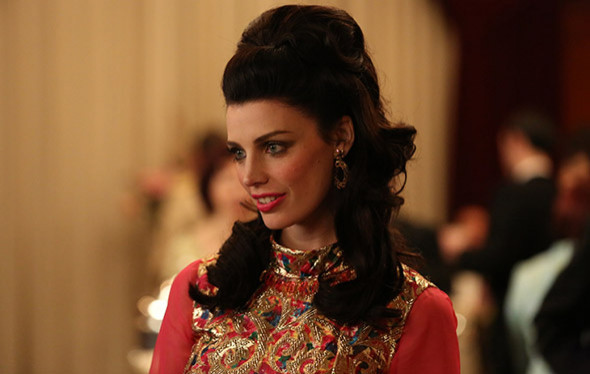‘Mad Men’ Season 6 MLK Episode: Did ‘The Flood’ Overplay Violence In New York City In The Wake Of Martin Luther King Assassination?

Matthew Weiner had a dream -- but was it based in reality?
Season six of AMC’s “Mad Men” took a decisive turning point on Sunday with its fifth episode, aptly titled “The Flood.” Written by Tom Smuts and series creator Weiner, the storyline was framed almost entirely around the assassination of Dr. Martin Luther King Jr., who was fatally shot in Memphis on April 4, 1968, at the age of 39. (A full recap of the episode is available here.) It was an atypical storyline for Weiner’s stylized period drama, which has mostly glossed over major historical events such as the Kennedy assassination. And until last season, the show has all but ignored the emerging civil-rights issues of the time.
But as the white, middle-class, male world of “Mad Men” has become incrementally less insular as of late, Sunday’s episode seemed to say, “Listen up, 1960s: Racial tensions are everyone’s problem now.” And anyone who knows anything about the latter half of the decade knew it was only a matter of time.
Reactions to the episode have been mixed to positive among critics and fans, including the Atlantic, Salon and our own Ellen Killoran. But as “Mad Men’s” greatest asset has always been the obsessive period detail of its creator, we thought it was worth exploring how accurately it portrayed the violence that took place in New York City following King’s assassination. Of course, no actual violence was shown on screen, but as usual, Weiner’s fervent devotion to period accuracy was revealed though exposition.
The characters made plenty of references to unrest in Harlem following King’s death. In one scene, Peggy receives a call from her real estate agent urging her to lower her bid on an apartment somewhere near 84th Street and York Avenue.
“They’re rioting 10 blocks away,” she says.
But were they? Indeed, while large-scale violence erupted in cities across America in the wake of King’s death, New York City, for the most part, avoided that fate. In his book, “A Nation on Fire: America in the Wake of the King Assassination,” the author Clay Risen explains that, while riots were widely expected in New York City, they never materialized, thanks in part to the efforts of Mayor John Lindsay. (An excerpt of Risen’s book is available here.)
Lindsay, who was at a Broadway play when he learned of King’s death, immediately drove with his aides to Harlem, where he mingled with residents and offered his condolences directly to the people most affected by the tragedy. As Risen explains it: “Lindsay had made a huge difference by showing up at a time when many mayors across the country were hiding out in bunkerlike emergency operations centers.”
Despite Lindsay’s efforts, however, New York City wasn't completely violence-free. Fires and looting did break out in Harlem and the Bedford-Stuyvesant neighborhood of Brooklyn. Two people were killed, and several arrests were made. But the disorder was minimal compared to the widespread riots that swept through Washington, Chicago, Baltimore, Kansas City and more than 100 other American cities.
As the Museum of the City of New York explains it in its description of archival Lindsay footage: “Key to Lindsay’s ability to keep the calm was the strategy of police restraint he adopted with Police Commissioner Howard Leary during earlier ‘long, hot summers,’ avoiding clashes that might have inflamed further violence. When Chicago’s Mayor Richard J. Daley ordered his police to ‘shoot to kill’ during the April 1968 riots, Lindsay sent a different message: ‘We are not going to shoot children in New York City.’”
But while the “Mad Men” episode may have hinted at unrest in Harlem, it made no overt references to widespread violence. Certainly violence was expected, which would account for the somber jitteriness of the characters throughout the episode, but it’s also fair to say that -- once again -- Wiener and his team did their due diligence in researching what took place in New York City the week of April 4, 1968.
If any of any of the scenes could be said to be misleading, however, it’s the final scene, when Don Draper looks out on to the city from his Upper East Side balcony. We hear sirens from the streets below, an indication of the tumult playing out in nearby Harlem. Accurate? Maybe. Ambiguous? Definitely. But as we’ve learned, it could've been so much worse.
Got a news tip? Send me an email. Follow me on Twitter: @christopherzara
© Copyright IBTimes 2024. All rights reserved.






















